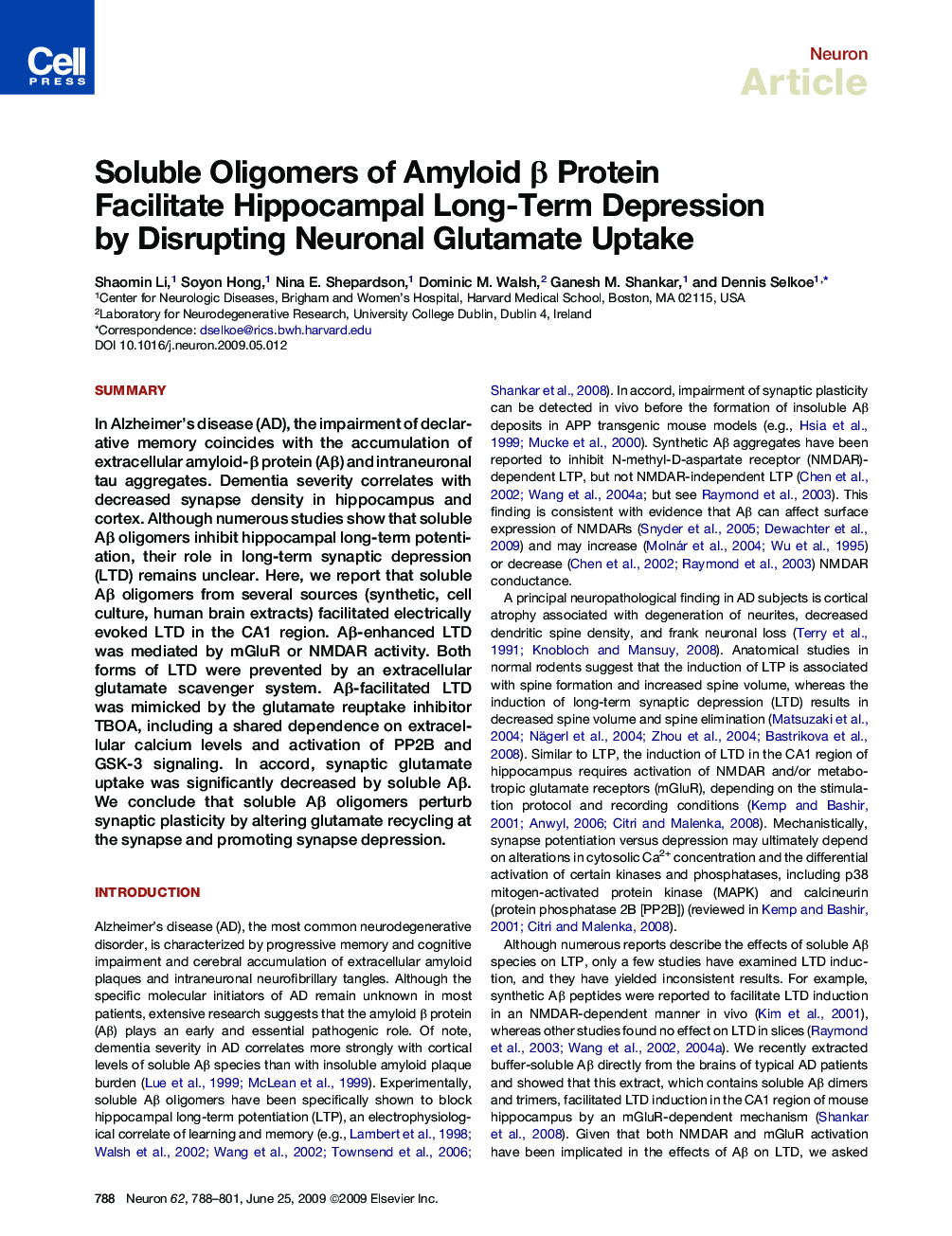| Article ID | Journal | Published Year | Pages | File Type |
|---|---|---|---|---|
| 4321956 | Neuron | 2009 | 14 Pages |
SummaryIn Alzheimer's disease (AD), the impairment of declarative memory coincides with the accumulation of extracellular amyloid-β protein (Aβ) and intraneuronal tau aggregates. Dementia severity correlates with decreased synapse density in hippocampus and cortex. Although numerous studies show that soluble Aβ oligomers inhibit hippocampal long-term potentiation, their role in long-term synaptic depression (LTD) remains unclear. Here, we report that soluble Aβ oligomers from several sources (synthetic, cell culture, human brain extracts) facilitated electrically evoked LTD in the CA1 region. Aβ-enhanced LTD was mediated by mGluR or NMDAR activity. Both forms of LTD were prevented by an extracellular glutamate scavenger system. Aβ-facilitated LTD was mimicked by the glutamate reuptake inhibitor TBOA, including a shared dependence on extracellular calcium levels and activation of PP2B and GSK-3 signaling. In accord, synaptic glutamate uptake was significantly decreased by soluble Aβ. We conclude that soluble Aβ oligomers perturb synaptic plasticity by altering glutamate recycling at the synapse and promoting synapse depression.
